Author’s Note to the Readers: This article is only limited to the towns’ and parishes’ erection periods from 1572 until 1956. Text reference was Qing Tula da ding Capampangan (ADMCMLV). Originally written in Kapampangan, the author translated them in English for universal appreciation. As much as possible, the author preserved the sacredness of the source material except when circumstances required. Acknowledgement is greatly extended to numerous Kapampangan Facebook groups, blogs and web sites whose documents and pictures were used herein.
Pampanga Parish Churches (1956)
Prologue
Pampanga has historically been one of the most powerful mitochondria of the Philippines in nation building. As an influential powerhouse in commerce, trade, entrepreneurship, politics, culture and religion, it has produced countless Filipinos whose names made echoes and imprimatur in Philippine society.
The novelty of the Kapampangans lies in their Kapampangan-ness: intelligent, iconic, forthright, gallant, genteel, cheerful, creative, ethnocentric, spiritual, sagacious, pious, candid, intrepid, fearless, bold, dominant…
Towering and soaring, they bouyantly pride themselves as majestic as their emblem – Mount Arayat. Flexible and resilient, they sturdily raise their ardour even in the foray of catastrophe. Merrily, they talk with sensibility and sensitivity. Intrepidly, they are found and stationed everywhere in the country and the globe. Boisterously, they are socially accurate and prudently precise and trustworthy. Culturally, they piously treasure and nurture the affluent heritage bestowed upon them by God Almighty.
In the deepest recesses of their soul, they pledge with fidelity their anthem of love of holiness to their motherland:
Himno ning Kapampangan
Kapampangan misapwak
King legwan na ning alaya
Gabun ding pantas at marangal
Sibul ning lugud, karinan ning tepangan
Batis ning katalaruan at panamdam makabalen
Ligaya mi ing mie payapa
King malugud mung kandungan
Kapampangan, sale ning legwan
Kapampangan, sandalan ning katimawan
Kilub ning pusu mi atin kang dambana
Luid ka! Luid ka!
Palsintan ming Kapampangan
Little History of Pampanga
The name Pampanga was derived from pangpang (riverbank). Geographically, its expansive bay area was thickly forested with vibrant and lush mangroves and estuaries. It teemed with rainforest flora and fauna which enormously thrived along the coastal towns and villages of the province.
It was aboriginally inhabited by Aytas, hence, the first known pangpangans.
Strategically, its waterways were highly navigable for ancient commerce and trade that attracted enterprises and inter-marriages among their neighboring Austronesians.
Quoting Ferdinand Blumentritt and Dr. Otley Beyer, Felix B. Punzalan (1956) noted that the early descendants of the Kapampangans came from the Sumatran region of Atjeh (also Aceh, Acheh) in Indonesia via the Borneo (Malayan) Peninsula. Thus, some linguistic similarities are lexically evident between the Sumatran and Kapampangan languages.
Rice and gold was chiefly the stuffs engaged by the neighboring countries. Thus, ancient Austronesian trading, amalgamation and cultural intermarriages were apparent among the native settlers and traders.
When Prince Balagtas (Tagalog-Kapampangan mestizo), sovereign ruler of the Madjapahit Empire (1350-1400), came to establish his territory in Luzon, Balagtas had learned that the Kapampangan Dominion was huge and expansive. It stretched from Cagayan until the surrounding places of Manila. In the Last Will and Testament of Malang Balagtas (descendant of Prince Balagtas), it was pointed that the Kapampangan Dominion is vast and extensive. It commences in Manila and reaches the region of Ilocos. It also included half portions of Bataan, Tarlac, portions of Bulacan, Pangasinan and Zambales.
Outside Manila, Pampanga was the first province to be established by the Spaniards led by Captain Martin de Goiti when he subdued its inhabitants on September 14, 1571.
Its territory extended from Cagayan until Bulacan (Calumpit and Hagonoy) including the towns of Puncan, Pantabangan, and Caranglan in Nueva Ecija.
Because of its prosperity, Chinese merchants bartered their silk, earthen wares, porcelains and other provisions that dated back during the Sung (960 – 1279 AD) and Ming (1368–1644) dynasties.
When the Spaniards arrived along the criss-crossing riverbanks of Baba (Lubao) on September 14, 1571, Christianity was immediately introduced by Captain Martin de Goiti and Fr. Juan Gallegos. As a sign of amity, the Spanish missionaries provided the pangpangans three religious items that included the Cross, Rosary and Image of the Blessed Virgin Mary. It is traditionally believed that the Crucifix of the holy image of Apo Sto Cristo Lubao, now enshrined at the Holy Cross Parish Church, was the same Cross given by the Agustinian missionaries to the pangpangans received by Datu Macabulos and Council of Elders. The Image’s carbon dating results evidently proved the authenticity of the Cross which is now officially declared Important Cultural Property of the Philippines bestowed by the National Museum – one of the country’s national treasures – in 2015.
The Kapampangans of the Kingdom were immensely affluent
and had already advanced civilization. The early natives were led by a powerful chieftain named Datu Macabulos (meaning, freedom/freeman). The chieftain and his family were the earliest baptized Christians, who later, left the place and fled towards the edge of Porac in Talak (now Tarlac). He was replaced by Agustin Cubacub, a native of Porac, who was largely instrumental in assisting the Augustinians in propagating the Catholic faith in Pampanga’s towns, its nearby territories, and in other islands of the country.
The new era of Christianity started the creation of towns and churches in the province. From a hybrid Mohammedan-pagano religion, Catholicism flowered and blossomed into the soul of the Kapampangans. As the first missionary center in Central and Northern Luzon, the huge Kapampangan Empire (Labuad Kapampangan) was later subdivided into autonomous provinces.
Today, Pampanga’s present size is even smaller than those that were incepted from her. Powerful as its history, it still remains as the regional powerhouse of Central Luzon and its prominence surges mightily in national and cultural pride. Like their ancestors, its people politically stride towards the best of their idealism and utopianism.
History of San Fernando
It was the chief of the Spanish army, Captain Fernando who subdued this settlement against the resisting Filipino warriors. Known for his amiable character, the Spanish leader was well-loved by the residents who readily received baptism from the Agustinian missionaries. Hence, they willingly submitted and recognized the sovereignty of the ruler of Spain – King Ferdinand III.
In homage to the king, they named the town in his honor, King Fernando III, who later became a saint.
Initially, the municipal government was held in 1754 by the first Spanish missionaries in a chapel (visitas) in barrio Dolores. When the “Capitana de San Fernando” was established on August 31, 1775, the civil administration was moved to its present site.
Upon the request of Governor Macario Arnedo, San Fernando became the capital of the Province on August 15, 1904. Since its transfer, San Fernando became a developed and progressive town. Soon, it was a trading hub of business and commerce. The Pampanga Sugar Development Corporation (PASUDECO) was built and began its operation on March 10, 1921.
Prior to its transfer, the seat of the provincial government was located in Bacolor. Since then, San Fernando’s economy tremendously grew and prospered.
Although the town’s public market was frequently razed by fire, it was one of the largest community markets in the country. Similarly, it became the seat of Manila-based commercial and industrial establishments. Concrete roads were made and huge houses made of strong materials dotted throughout the town.
In 1956, its population was 44,077; public schools were 21; number of school children was 9, 600; annual income was approximately P400, 000.00. The municipal mayor was Miguel Baluyut.
Parish of Virgen de los Remedios (Baliti, San Fernando)
During the earlier times, Baliti, Saguin, and Pulong Bulo were unified barrios headed by Basilio Henson. In 1908, Baliti became an autonomous barrio. Barrio captain Francisco Panlilio chose Virgen de los Remedios as the barrio’s patroness. The Lady was initially enthroned in a dilapidated structure called bantayan. In 1918, its first chapel was erected that finally became the church’s permanent site.
On December 3, 1943, the church became a parish. Its first parish priest was Mons. Francisco Cancio. Through the generosity of the Yusuico family and the unceasing efforts of the devoted parishioners of the parish, the lovely and concrete church was completed. Father Generoso Pallasigui took charge in the construction of the church and its convent. Father Manuel Baula also exerted efforts to beautify the interior of the church by installing ornaments in it.
Cathedral of the Assumption
The first church was made of light materials mostly thatched nipa, bamboos and other indigenous wood. The first parish priest was Father Vidal Arrozal. On April 6, 1918, Monsignor Prudencio David was assigned to administer the church. The church was burned twice; the second was on February 9, 1939. Mons. Prudencio David began the construction of the present church.
The church of San Fernando became a Cathedral when it was converted as diocese on December 11, 1948. The first bishop was Mons. Cesar Ma. Guerrero, D.D. who was installed as the Cathedral’s head on September 8, 1949.
Mons. Bartolome Zabala was assigned parish priest of the church in September 1952. He continued the unfinished works of his late predecessor and worked for the painting of the exterior parts of the church.
Parish of San Vicente Ferrer (Calulut, San Fernando)
The parish was built in 1914 with 8 barrios and 2 hamlets under its jurisdiction. Its first parish priest was Mons. Pedro Santos, the Archbishop of Naga, which at the same was his first parish assignment. He designed and constructed the parish church.
Because of the distances of the barrios under its jurisdiction, the parish priest found it difficult to thoroughly administer the evangelization needs of the parishioners; hence, Mons. Miguel O’Doherty divided the parish into two: Baliti Parish in San Fernando and Anao Parish in Mexico.
The parish priest improved the church, fenced it, organized the church yard, and constructed the Grotto of Lourdes at the church’s garden.
History of Mabalacat
It is from a balacat (Ziziphuz talanai) tree where Mabalacat derived its name. This plant species commonly thrived in the area during those times and even today. Mabalacat was part of Bamban during the earlier days.
Together with Malayo-Polynesian Kapampangans, the place was founded by its earliest settlers – the balugas or Aytas. The first founder of the community was named Carangan. He was known as the pioneering chieftain of the place and was pure Ayta.
The town was originally under the jurisdiction of Bamban. When the province of Tarlac was created as a province in 1873, Bamban was incorporated as town of the newly established province. On the other hand, Mabalacat was reverted as a town of Pampanga. When the Commandancia Militar was established, Mabalacat became part of the military command that was established by the Spanish authorities. Other towns that were included in the commandancia were Porac, Floridablanca, Magalang, Tarlac, and others. After the military period, Mabalacat was finally rejoined to the province of Pampanga. Mabalacat has expansive land area that included some parcels inside the Clark Air Field.
Parish of Virgen de Gracia (Mabalacat)
The town and parish were erected in 1768. The earliest settlers of the town were baluga (Aytas). It derived its name from an indigenous tree balakat due to their abundant growth in the area during those times.
According to traditions, the Aytas’ chieftain Garagan originally owned the image of the Virgen de Gracia and the church’s bells, which were given to him by moros (pagans). Later, he gave them to a friend named P.C. Mallari, who then bequeathed the Virgin’s image and bells to the church because of his strong friendship with the church’s priest. Thus, the Image became the central devotion of the residents. Its feast day is celebrated every February 2. Its first priest was Rev. Fr. Jose Valera.
In 1956, its population was 27,128; public schools were 5; number of school children was 4, 214. Its mayor was Armando P. Quioc.
Parish of Our Lady of Victory (Dau, Mabalacat)
In March 1953, upon the request of the parish priest of Mabalacat, Fr. Fernando Franco was designated to lead in the construction of a chapel in San Isidro in barrio Dau. The chapel became the parish church of Our Lady of Victory that was erected in 1955.
Through the assistance of the Dau Catholic Circle, the church and its convent were completed. Rev. Fr. Franco, the first parish priest of the church, took the initiative in constructing the church. To be able to realize its construction, he spearheaded the organization of various religious associations and confraternities to solicit funds for the church’s completion. These organizations included Adoracion Nocturna, Legion of Mary, Campun ning Virgen ning Lourdes, and Confradia nang San Antonio. He also worked for the establishment of the parish’s Catholic cemetery.
History of Angeles
Culiat was the first name of the town. Its etymology was derived from hard vines (wake) that enormously thrived and dangled throughout jungle trees in this thickly forested area during those times. Don Angel Pantaleon y Miranda, a military captain, started the establishment of the town.
From 1796 to December 7, 1829, Culiat was a barrio of San Fernando. Before it became a town in 1829, religious celebrations were already held since May 12, 1812. On December 17, 1928, the geographical boundaries between San Fernando and Angeles were established.
In honor of the founder (Don Angel) of the town, it was named in his homage “Angeles.” Similarly, it was so named in reverence to their patron saint “Los Santos Angeles Custudios” (Ding Angeles a Talaingat da). Since then, the titles became synonymous to the town of Angeles.
In 1956, its population was 40, 772; public schools were 10; number of school children was 7, 911; and annual income was estimated at P300, 000.00. Its municipal mayor was Manuel Abad Santos.
Parish of Sto. Rosario (Angeles)
Angeles is an estate (hacienda) in 1814 which was established as a parish in 1829. The first chaplain of the estate was Rev. Fr. Pedro David. Don Angel Pantaleon de Miranda and Dona Rosalia de Jesus took charge for the erection and construction of the church.
In 1877, the construction of the present church began and was completed in 1891. The installation of the bell towers were completed in 1896. In 1898, the administration of the church was transferred the Filipino priests, and the first administrator was Fr. Baltazar Gomorra. Msgr. Cosme Bituin led in the construction of the present convent.
Parish of Virgen ning Lourdes (Lourdes, Angeles)
The parish was established under the administration and supervision of the parish priest of Angeles and vicar general, Mons. Cosme Bituin. The construction was ably done through the enthusiastic assistance of its parishioners led by the Catholic Women’s League.
In July 1953, the construction of the church started but eventually stopped due to lack of funds. In December 1953, the convent was completed.
On January 6, 1954, its first parish priest, Msgr. Serafin Ocampo was installed. During the same period, the Knights of Columbus and Daughters of Isabela – Angeles Chapters were established. The religious organization immensely contributed for the continuation of the church’s construction until its completion.
Parish of Sto. Cristo (Sapang Bato, Angeles)
Due to the immense desire of the Holy Church to propagate the Christian faith in far flung places, the Archbishop decided to build the Parish of Sto. Cristo in Sapang Bato in 1936. The first parish priest was Father Jose Dayrit who initiated the building of the church. The church was razed in 1941 as a result of World War II.
After the war, Father Eustacio Cortez was assigned as the 2nd parish priest. He rebuilt the church through the cooperation of its parishioners. Father Monico Pineda made improvements to beautify the church and supervised the construction of the convent.
History of Magalang
Magalang connotes courtesy, respectfulness, politeness to the elderly. It is believed that the early people of the place were prominently ma-galang or respectful; hence, they called the place Magalang. If someone happened to meet and talk with a discourteous person, elders would speak of the old adage “Balamu ata eca pa mecapangan pale Magalang” (Seemingly, you have yet to eat rice raised in Magalang). The wisdom is aimed to remind the person of his disrespectful or brusque manners towards the elders.
The original site of the town was located in barrio San Bartolome, which at present time is a barrio of Concepcion, Tarlac.
During the Malong Uprising in Pangasinan, Malong sent Melchor de Vera with 6,000 warriors to encourage the Capampangans to join them in their revolt against the Spaniards. It was in Magalang where he and his men encamped and furiously fought with the warriors of Magalang against the Spaniards. However, the Malong uprising did not last long; thus, de Vera and his men left Magalang and returned to Pangasinan.
In 1956, its population was 39,034; public schools were 28; number of school children was 6, 888; annual income was approximately P43, 000.00. Its municipal mayor was Orencio Gueco.
Parish of San Bartolome (Magalang)
According to the historical documents of Cadaba and Marin, Jesuits, Magalang already existed in 1605 as a community. It was originally a part of the village of Macapsa (Concepcion, Tarlac) and already bore the name Magalang. It was named magalang because of the reputable politeness of its people. It was traditionally believed that the Agustinian missionaries founded the town and parish.
The town was divided into two sites due to a powerful flood that occurred in the place (Macapsa) in 1660 which displaced the people. Residents who evacuated towards the northeast established their abode in Concepcion, Tarlac. Those who proceeded towards the southeast resided in Magalang. There was no existing record or date that testified for the second building of the church. However, according to Fray Pedro Murillo Velarde, Magalang already existed in 1734 as part of barrio San Bartolome.
The first celebration of the holy mass and baptism in San Bartolome were held on May 15, 1765. Since then, the church administration was done by Filipino priests who relieved the Agustian missionaries from their ecclesiastical functions in the province. Fr. Horacio Kabiling started the huge work for the construction of the church. Upon its completion, the parish priest decorated the interior of the church with elaborate embellishments. Known for its elaborate decorations, the church became popular in the province, courtesy of the support of its parish priest and parishioners.
History of Porac
The etymology of Porac was derived from the plant purak (alias pandan lalaki) that commonly thrived in the area. They were tremendously found everywhere especially along mountains, hills, seashores, and riverbanks. The founders of the place belonged to the Dumandan clans who descended from King Soliman. According to Don Severino de los Reyes, there were four early settlers who first came in the place and established it as a village. These clans were the Quiamdan, Lundan and Manacuil, and a colleague of Dumandan.
Parish of San Ignacio (Manibaug, Porac)
Manibaug was established as a parish on February 11, 1943. Its establishment was made possible upon the request of the De Jesus family. Its first parish priest was Mns. Pedro Punu. He initiated the construction of the church and immensely propagated the Christian Catholic faith to the parishioners. He was succeeded by Father Felipe Manalang who introduced the nightly recitation of holy rosary. It was Fr. Pedro Jaime who initiated the building of the church’s convent through the assistance of Galicano Enriquez.
Originally settled in a barren area, it was moved to a more suitable location where people sustainably found abundant food and stuff; hence, the present site of the church. Until 1816, priests from Culiat supervised the administration of the church’s services.
According to archeological findings, the place was a prosperous abode where Chinese came to trade with the natives during those times. Dr. Otley Beyer excavated Chinese wares, porcelains and other stuffs at Hacienda Romana that were believed to have existed during the 3rd century (siglo tres). The findings implied that the Chinese came much earlier than the arrival of the Spaniards in the area.
In 1956, its population was 10, 340; public schools were 15; number of school children was 3, 434; annual income was approximately P52, 000.00. The municipal mayor was Higinio Gopez.
Parish of Sta. Catalina (Porac)
The Agustinian missionaries arrived in this rustic place called Purac, which is few away from its major river. The missionaries requested from the settlers (Aytas) that they will be allowed to construct a chapel for the celebration of the Eucharist. Thereafter, the Agustinian missionaries alternately came to the village to celebrate the Holy Mass. The first priest of the mission was Father Pedro David.
The family Dumandan, now Lumanlan, and other village chiefs helped in the spread of the Christian faith. The town heads originally thought of transferring the church to a new site but never happened due to a mysterious event that took place in the area.
In 1887, the church rose into its loftiness through the initiative of Father Fernando Martinez. Father Daniel Castrillo also took initiatives to construct the church into a much more beautiful house of worship, and had the convent completed in 1938. Father Santiago Blanco worked for the completion of the church and established the St. Catherine Academy.
History of Apalit
The name of the town was derived from a huge, boisterous and hard wood called apalit. Apalit or narra (Pterocarpus indicus) trees enormously grow throughout the area especially along the banks of Pampanga River. A solitary and gigantic apalit tree that awesomely stood along the riverbank whimsically attracted residents, passers-by, and banca and wharf riders as they travelled along the river. Due to its prominence, the place adopted the name of the tree.
According to the Last Will and Testament of Malang Balagtas, the settlements of Sulipan and Capalangan were established by Malansic, descendant of King Soliman together with his cousins, Pampalong and Tawi.
The town’s original founder was Juan Capitangan, wife of Princess Bayinda. Its 2nd founder was Agustin Mangaya during the 16th century. The third generation founders included the families of the Samonte, Canda, Catu, Cortes, Vergara, and Yangga.
Panday Pira who was the pioneering Filipino cannon maker was from Apalit. The town is noted for its blacksmith industry, bolo making, pottery and earthen cooking material making, and puto seco making. It is also known for its expertise in the art of cooking.
In 1956, its population was 15, 467; number of public school was 14; number of school children was 3, 711. Its municipal mayor was Alfonso Lugue.
Parish of San Pedro (Apalit)
Apalit was established by the Spaniards in 1582. It was named Apalit because of the presence of a huge apalit tree (narra) that exuberantly stood in the place.
After the creation of the Spanish civil government, the Agustinian missionaries started the construction of the church. In 1590, a church was already utilized to celebrate the holy mass. It was destroyed by a powerful earthquake in 1833. It was rebuilt by Mariano Santos of Guagua in 1876 with its parish priest, Rev. Fr. Antonio Redondo. After 5 years, the church was completed.
It was here where the diocesan seminary, Mater Boni Consilii, was established by the bishop. The convent was also built during this time. Mons. Bartolome Zabala, parish priest, also built the new convent near the church.
Parish of Divina Pastora (Balucuc, Apalit)
Because of the desire of Archbishop Miguel O’Doherty to evangelize the far flung areas in Apalit, he established this parish before the eruption of World War II. Father Teofilo Limlingan was appointed as the first parish priest of the church. The church was destroyed due to the havoc of war.
When the parish was reopened, a priest was assigned in the person of Fr. Florencio Lumanlan on April 12, 1956. He started reconstructing the church and the convent. He organized confraternities and other religious organizations to help him in the construction of the church. Fr. Florencio Tumang also became the parish priest of the parish.
History of Macabebe
The town was named Macabebe because it is geographically situated along the shores or banks of Rio Grande de Pampanga. Some called it Macabibi because the river was abundantly grown with corals and shells during the early times.
Traditionally, the early inhabitants of the place were known to be the early Kapampangans because they were the first to revolt against the Spaniards headed by the descendants of King Soliman. The King of Macabebe and Hagonoy met and fought against Martin de Goiti when he entered to conquer Luzon in 1571. It was not only in Pampanga and Manila that they fought against the Spaniards but also in Visayas, Ilocos and Mindanao.
Because of their innate nature as military warriors, they joined the Philippine Scouts during the American regime. Today, they received pensions from the American government. As enterprising people, they trade clothes, mats, holy images and the likes in almost all corners of the country.
In 1956, its population was 18, 673; number of public schools was 17; number of school children was 5, 633; annual income was approximately P50, 000.00. Its municipal mayor was Domingo B. Flores.
Parish of San Nicolas de Tolentino (Macabebe)
The town was so named because it is geographically located along the shores (baybay/bebe) of the Rio Grande de Pampanga during those times. The town and church were built in 1609. The first parish priest was Father Sebastian Molina and was assisted by Father Montoya. It was one of the biggest churches in the province because its length measured 70 meters and 17 meters wide. However, the church was razed by the revolutionaries in 1899.
No records showed the date of its transfer when the Filipino priests took over its administration and supervision. After several years, the town’s people persevered in reconstructing the church. Fathers Generoso Pallasigui and Eulalio Yabut made improvements for the old convent of the church.
Parish of San Rafael Archangel (Baliti, Macabebe)
The parish was established and separated from Macabebe in 1941. The first parish priest of the church was Father Hermogenes Coronel. In 1947, Father Jose Narciso and Mons. Serafin Ocampo became interns of the church. In 1948, Father Conrado Gosioco was appointed parish priest and stayed for 7 years.
On April 29, 1955, Father Felipe Roque was assigned priest of the parish. Later, Rev. Fr. Pedro Capati was also assigned to take charge of the church.
History of Masantol
Masantol means plentiful santol (Sandoricum koetjape). This was how it derived its name although there’s scarcity of the trees in the area.
Until 1876, Masantol was a barrio of Macabebe. At that time, it included the following sitios: Bebe, Nigui Caingin and Bulacus. As people increased, more sitios or village sites rose; hence, its income increased. Because of this, it became independent from Macabebe on March 20, 1889.
Passionately, the people of the place loved sinigang that was popularly cooked with santol. The fruits were sold by enterprising vendors from Guagua, Macabebe, Lubao, etc. As soon as the vendors arrived in the town, female residents briskly and excitedly inquire from the vendors: marakal santol? The vendors quickly reply: wa, masantol! Thus, the town derived its name – Masantol.
The town had also been popularly known for its American pensioners who served the United States of America Military Army during WW II. Noted for their entrepreneurship, they sell clothes, holy images, plates and the like. As intrepid and enterprising vendors, they’re found everywhere in the country.
In 1956, its population was 19,470; number of public schools was 15; number of school children was 4,479; approximate annual income was P45,000.00. Its municipal mayor was Carpio Calara.
Parish of San Miguel de Arcangel (Masantol)
The parish of Masantol was erected in 1901 through the desire and initiative of Manila Archbishop Mons. Bernardino Nozaleda. The first parish priest was Father Jose C. Mariano.
In 1932, the church’s parish priest Mons. Bartolome Zabala completed the construction of the church. He embellished it with decorations and ornaments.
The Cruzada de Caridad under the care of Virgen de los Remedios began in the parish on April 15, 1952. In remembrance of this, the statue of the Virgen de los Remedios was built at the churchyard by its priests and parishioners.
Parish of Santo Rosario (Bulakos, Masantol)
According to the traditions of the early people of the place, Bulakos was an expansive river. It was called bulakos because of Cirilo, a valiant and war-like warrior who punished his enemies by breaking or cutting off their tibia (bulakos).
In 1949, the church was converted into a parish through the initiative of Dona Teresa B. de Lacsamana. It had 8 barrios under its jurisdiction.
The first parish priest was Rev. Fr. Pedro Jaime who started building the church and convent. He was followed by Re. Fr. Vicente Navarro who continued the work that were done by his predecessor. The land was donated by Don Carpio Calma. Fr. Marcelino De Leon also became parish priest of the church.
History of Minalin
Minalin came from the word minalis (transferred). During the construction of the church, the wood materials that were supposed to be used in building the church were kept in barrio Santa Maria, Macabebe. However, the construction materials were swept away by strong torrents when a powerful flood struck the place. As a result, the materials were plowed by the flood and were later found in a place named Burol. Burol (hill) was more elevated and less prone to flooding. Because the wood materials were swept here, the residents thought of transferring the church here instead of building it in Santa Maria. The residents of Santa Maria protested, yet, the clamor of the people of Burol was sustained by the church authorities. The authorities of the church ruled in favor of the request of the people of Burol because they found it not only difficult for these people to come to Santa Maria to attend holy masses and other church activities due to its distance, but also of their large population. Their population was large enough to build the church in the area. The church was permanently transferred to its present site, hence, minalis or minalin.
In 1951, Minalin was annexed to the municipal government of San Fernando. However, it became an autonomous town after several years.
Like its mother town – Macabebe – many of its people were also engaged in selling and vending various stuffs such as clothes, holy images and the like. Because of their enterprising character, they are also found everywhere in the country. It is also noted for its egg production.
In 1956, its population was 10,430; number of public schools was 10; number of school children was 2, 447; estimated annual income was P38, 000.00. Its municipal mayor was Subas Pingol.
Parish of Sta. Monica (Minalin)
Minalin was formerly a barrio of Macabebe. It was created as an independent town in 1699 through the initiative of its barrio leaders. It was erected as a parish in 1764. Its first parish priest was Father Dr. Manuel Franco Tubil who took charge in the construction of the church and its convent. During the time of Father Eulalio Yabut, he supervised the construction of the church’s ceiling through the assistance of Mayor J.T. Macapinlac.
The last Agustinian priest who was assigned in the parish was Father Faustino Diez. The first Filipino priest was Father Macario Panlilio. Rev. Fr. Macario Bustos also became a priest of the parish.
Parish of Virgen de los Remedios (Sto. Domingo, Minalin)
The parish was created on April 12, 1956. Its areas of jurisdiction were taken from the parishes of Minalin, Sto. Tomas, Apalit, and San Simon. Its first parish priest was Rev. Fr. Elias Reyes.
Upon his assumption as parish priest of the church, he immediately persevered in transforming the small chapel into a bigger church. He organized various religious organizations such as the Accion Catolica, Apostolado ning Panalangin and other associations to assist him in his plans to build the church. Rev. Fr. Elias Reyes worked for the building of the Catholic Cemetery and construction of the convent.
History of San Simon
It was during the governorship of Governor General Simon de Anda y Salazar that the town was created as a town. The town was named in his honor and San Simon Apostol was chosen as the town’s patron saint.
The town’s first name was Del Pilar and its first patroness was Virgen del Pilar. It was also named after one of the town’s brilliant sons, Mariano de Pilar de los Reyes, who initiated for the adoption of the town’s new name – San Simon.
Because of the small income of San Simon, it was annexed to the town of San Luis. However, this did not take long and was immediately created as an independent town.
In order to expand the territorial jurisdiction of the town, the adjacent barrios of Santo Domingo and Lourdes were annexed into it. However, the town of Minalin protested against the annexation until the two barrios were finally reverted to it as they were politically and geographically under Minalin’s territory. On the part of Apalit’s land assertion in San Miguel de Mayumo, the entitlements were awarded to the town of San Simon as were deemed part of its jurisdiction.
Because of its small income, affluent citizens of the town took initiatives to donate amounts for the construction of school buildings, the church, and the municipal hall. These families included the following: Ibanez, Punsalan, Guevarra, Santos, Reyes, Angeles, Pangan, and others. The town had produced great number of professionals in the province. Most of the people engaged themselves in farming and weaving of palm hats and mats.
Parish of Nuestra Senora del Pilar (San Simon)
The town and the parish church were founded in 1770. The town was named after Spanish Governor General Simon de Anda y Salazar. The town’s name was recommended by Don Mariano de Pilar y de los Reyes.
In 1820, the church was constructed using strong and concrete materials. The church was razed by fire during WWII. After the war, a temporary church was built using thatched nipa and light materials.
When Father Macario Bustos was assigned parish priest of the church, he started the construction of a bigger and stronger church through the initiative of Mr. Catalino Ibanez and the town’s people. Father Esteban David led in putting up the statue of the Image of the Sacred Heart and the grotto of the Lady of Lourdes located at the church’s yard. Fr. Pablo Songco was also assigned parish priest of the church.
History of Sto. Tomas
The name Sto. Tomas was derived from the patron saint of the town, Santo Tomas Apostol. The town had already an organized government when the Spaniards arrived in the place. It was one of the earliest towns established by the Spaniards in the province.
Because of the town’s small income, 5 of its barrios were annexed to the town of San Fernando in 1903. Due to the insistent request of the town’s people, it was reverted again as a town through Presidential Executive Order on October 12, 1951.
Its barrios included Santo Tomas, San Bartolome, San Vicente, San Matias and Santo Rosario (Pau). The municipal building was originally located in barrio San Vicente. However, due to the request of the residents of barrio San Matias, the administration of the municipal government was transferred there; whereby, the municipal officials and officers were sworn into office on January 11, 1952.
Again, the residents of barrio Santo Tomas persistently petitioned for the transfer of the municipal government. According to them, their place was historically the original site of the municipality. It is for the reason that the town’s central government stood in this barrio today.
Parish of Sto. Tomas – Apostol (Sto. Tomas)
The parish was one of the earliest churches erected by the Agustinian missionaries. In 1777, the church and its convent were reconstructed into much bigger structures. However, these were razed by fire in 1898. After the revolution, the Augustinians started reconstructing the church and its convent by asking donations from generous citizens and neighboring towns. After 20 years, the construction of the projects was completed. Rev. Fr. Diosdado Guese became a parish priest of the church.
History of Sta. Ana
It was named in honor of Santa Ana, the blessed mother of Virgin Mary. It was originally called Pinpin who first founded the place. Pinpin descended from Malansic. He claimed sovereignty and jurisdiction over lands in San Luis but was never realized because his territorial claims were completely rejected by authorities. In Kapampangan, pinpin means neatly piled or well-arranged. The place must have been a thickly forested land where wood was plentifully harvested during those times.
In 1956, its population was 11, 282; number of public schools was 7; number of school children was 2.223; annual income was approximately P37, 000.00. Its municipal mayor was Agapito Gaddi.
Parish of Sta. Ana (Sta. Ana)
The town was erected in 1760. The first parish priest was an Agustinian missionary named Father Alonzo Forrero. The church was constructed through the efforts of Primer Prior Padre Lorenzo Guevarra, OSA.
All Filipino priests who were assigned in the church greatly contributed for its development starting with Mons. Prudencio David. The church’s fences and convent were done by Father Felixberto Lozano. Father Osmundo Calilung worked for the construction of the church’s altar. Msgr. Francisco Cancio also served as parish priest of the church.
History of Arayat
Arayat came from the word alaya. “Bunduc Alaya” means Bunduc ning Aslagan. Its first name was dayat (farm) that came from dayatan (enormous farmland). Prior to the arrival of the Spaniards, it was called Balayan ning Pambuit. The town was originally located inside the forested area of Mt. Arayat populated by Aytas who were generally pagans.
The pioneering settlers of the town included Jose Carlos Garcia, Macapagal, Simbulan, Suba, Lapira and Maria Vina.
Mount Arayat is also called Mt. Sinukuan who was believed as the care taker of the mountain and its lush forest. Suku was mythologically known to reside at the midst of the two-pronged sides of the mountain with her three daughter princesses who were said to be embellished with fine gold and jewels. Any stranger who desecrated the area and displeased the princesses and Suku will be cursed; thus, unable to return home again, turn into a stone, etc.
Juan Macapagal, king of the place, who never joined the Pampanga Revolt in 1660 led by Francisco Maniago persuaded the revolutionaries to halt the uprising. Because of his persuasion, the revolt failed.
Parish of Santa Catalina, V y M (Arayat)
The parish church was established in 1590. The pioneering Agustinian missionaries were Fathers Contreras, Bedoya, Ortiz and Osorio. One of the most famous Capampangan writers, P. Jose Torres, visited the place, and was believed to build the “bano” located beneath Mt. Arayat. He wrote “Pamigunam-gunam” (Reflections) and homily books (6 Volumes) that were used by the Agustinians in their evangelization.
The church was also renovated and improved by Fathers Jose Torres and Juan Terrero. Father Felipe Manalang also served as parish priest of the church.
History of Candaba
Candaba was derived from candawe or candave. These names points to the appellation of barrio Mandawe, which today is Mandasig. The Spaniards called it Candawe or Candave, and ultimately, Candaba.
The town is extremely depressed as it is frequently flooded by the Pampanga River. The well-known Candaba Swamp is located in this town. It is the sanctuary of migratory birds. It is the hometown of the finest watermelons and melons that are sold in Manila and elsewhere in the country. The Candaba Swamp hosts the best tasting catfish, mudfish, shrimps, tilapia and the like. It is also known for its tagilo (rice and fish ferement) Candaba.
Along the banks of the Candaba Swamp dwelt numerous Chinese merchants during those times. Eventually, they intermarried with the natives and began trading here and the nearby towns of San Miguel de Mayumo and Baliwag.
Myth tells that a giant and powerful tikbalang ploughed the lands of the Candaba and mounted it in Arayat.
In 1956, its population was 18, 669; number of public schools was 17; number of school children was 3, 817; estimated annual income was P40, 000.00. Its municipal mayor was Godofredo Gatus.
Parish of San Andres (Candaba)
The parish was built in 1575. It was originally called Canduay; others called it Candawe. No one can attest why the town was called Candaba. The church was temporarily built in 1593 and the first parish priest was Father Manrique, who was four times prior of the convent of the San Agustin Church in Manila. Fr. Felipe Guevarra started the construction of the stone church. In 1875, the pennant of the church’s belfry was stroke by lightning that brought it to collapse. In 1890, the tower was repaired through the efforts of Father Bravo. Father Ibeas led in the construction of the church’s dome.
According to accounts, God’s righteousness to his priests against those who persecute them was evidently reported in the town’s history. A certain person who slapped the face of a priest was believed to have been cursed because of his cruelty. His unkindness withered his hand that never healed until his death.
In 1897, the administration of the church was transferred to the Filipino clergies, and Father Eulogio Ocampo was its first local parish priest. Rev. Father Jose Bondoc was also parish priest of the church.
History of Mexico
Masicu was the original name of the town. It was derived from maca-sicu. Its elbow-shape boundary is surrounded by the towns of San Fernando, San Luis and Santa Ana. It is also situated along the towns of Angeles, Arayat, Mabalacat, and Magalang. For facility in pronunciation, the Spaniards called it Mexico later.
As most of the large tracts of lands were owned by rich landowners here, organized groups supported the plight of the tenants’ rights vis-à-vis land emancipation. Soon, farmers’ organizations such as the “Anac Pawas” were born among the town’s barrios and neighboring towns. The socialist movement and other peasant organizations were also organized here that survived for a long period of time. General Hizon, one of the prominent Filipino heroes was born here.
In 1956, its population was 4,517; number of public schools was 27; number of school children was 19, 470; annual income was approximately P50, 000.00. Its municipal mayor was Marcos Padilla.
Parish of Santa Monica (Mexico)
The parish was was built in 1581. The first Agustinian missionaries were Fathers Quevado, Heredero, Montoya, Peralta, Montes de Oca, Zabala, Gutierrez, and Bendoya. The first concrete church was built in 1665, and was improved by Father Jose dela Cruz. The church was destroyed by a powerful earthquake in 1880. It was the intense desire of Fr. Esteban Ibeas to build a much bigger church but was never realized because he was afflicted with illness. Fr. Ibeas built the temporary church that is presently used by the parishioners. He was succeeded by Fr. Juan Torero who intended to continue the unfinished works of Fr. Ibeas if not for the uprising that occurred against the Spaniards.
In 1922, Rev. Fr. Felipe Roque built the facade of the church. During the period of Father Quirino Canilao, the construction of the big church started. Father Melencio Garcia continued the construction began by his predecessor.
Parish of Virgen Mediatrix (Anao, Mexico)
The decree to transfer the parish of San Jose in Anao, Mexico was realized on June 29, 1955. Not only because of its remoteness from the town but was also the center of various activities among adjacent barrios, Bishop Cesar Ma. Guerrero, together with his consultants deemed to establish the parish in Anao.
Anao derived its name from the anao (Livistona rotundifolia) plant that prominently grew in the place during that time. Because of its lofty height, it was seen everywhere by the residents and passers-by. Its patron saint is San Miguel Archangel. The parish’s first parish priest was Father Bienvenido Macalindol. Rev, Fr. Alfonso Ducut worked hard for the construction of the new church through the help of the parishioners.
History of San Luis
When Pinpin (Santa Ana) intended to annex some of hamlets and barrios of the town, the towns’ people requested the assistance of a lawyer in the settlement of the dispute. The lawyer’s wife was named Dona Luisa. Because the town won over the territorial dispute, the people named the place in honor of the lawyer’s wife, and made San Luis as the patron saint of the town.
The underground insurgent named Felipe Salvador made the thickly forested areas of San Luis as his asylum. Here, he lengthily stayed and won his victories against his enemies. It was in the wild forest of Anias of this town where he was captured.
It is also the birthplace of Taruc and Calma who prominently figured in the leadership of the Huk Movement.
In 1956, its population was 9, 882; number of public schools was 11; number of school children was 2, 408; estimated annual income was P38, 000.00. The town mayor was Samson Panlilio.
Parish of San Luis (San Luis)
The town’s original name was Cabagsac that means abode of fruit bats. The name San Luis was given in honor of Dona Luisa, the wife of the gallant lawyer who fought for the retention of the town’s sovereign land rights over the claims of the town of Pinpin (Santa Ana).
The parish was erected in 1775. The first Agustinian missionary was Father Nicolas de Orduno. The seed of the Christian faith planted by the missionaries was profusely cultivated by the succeeding priests that were assigned in the parish. The parish church was built through the painstaking efforts of the parishioners led by Don Tomas Manankil.
In this town was born the famous “President Rural Movement.” The project Katubusan that was organized in barrio Santa Monica became the model and training center with regard President Magsaysay’s dream to uplift the plight of the marginalized Filipinos in the countryside throughout the archipelago.
History of Bacolor
Baculud derived its name from macabaculud, macapadurut, matas a gabun, macapadurut mababang gabun. Its opposite is mababa or Baba, Lubao.
The founder of Baculud was a brave woman named Monmon, the wife of Magmanoc, brother of Malansic, descendant of King Soliman.
There was also a belief that Bacolor was founded by Don Guillermo Manabat in 1576. Hence, the church was built right at the spot of his tomb, and in his homage was chosen San Guillermo Ermitano as the town’s patron saint.
Bacolor is the hometown of wise men and countless government officials. Many government leaders of the country and province hailed from Bacolor.
When the American civil government was established, the Taft Commission met here. It was also in this town where Emilio Aguinaldo stayed before proceeding in Northern Luzon, and made it as the country’s capital.
When the civilian government was organized in the province, Bacolor became its capital on August 15, 1904.
In 1956, its population was 25, 588; number of public schools was 12; number of school children was 4, 355; its estimated annual income was P50,000. 00. The municipal mayor was Adriano Puno.
Parish of San Guillermo (Bacolor)
Villa de Bacolor was the named given to the town during those times. It was so named because it was here where General Anda y Salazar established his military command. Bacolor derived its named from gabun matas at patag (elevated and even land). The founder of the town was Guillermo Manabat in 1576, and its patron saint is San Guillermo Ermitano.
Its first parish priest was Father Ochoa. Its church was one of the finest churches in Pampanga. The church’s ornaments and decorations were provided by Fathers Manuel Diaz, E. Alvarez, and Antonio Bravo.
As the Lady of Lourdes in Cabetican is highly revered by enormous devotees, the bishop organized the Peregrinacion every Saturday in 1950. The devotion was held for five years until it was transferred at the sanctuary of Lourdes, Angeles.
Fathers Andres Bituin and Jose Guiao also became priests of the parish.
Parish of Maria Auxilladora (Potrero, Bacolor)
The parish was built on March 27, 1955. Rev. Guido Aliwalas was the first parish priest. He transformed the small chapel into a bigger church and built the convent too. He also improved the Catholic cemetery of the parish which in the past was under the jurisdiction of the parish of Bacolor.
Under the parish’s jurisdiction included the following barrios: San Antonio, Dolores, Concepcion, Maliaualu, Potrero, San Basilio, and sitios Balas and Duat. Because the barrios were too distant from the parishes of Bacolor and Santa Rita, the Bishop created the parish to facilitate the propagation of the faith.
History of Floridablanca
Floridablanca was formerly a hamlet of Lubao. Its original settlement was located in San Jose de Caumpauit. Its parish was erected on April 30, 1867.
The Conde de Floridablanca came to visit the place before its creation as a town. In his honor, the town was name after him.
From its original site in barrio Caumpauit, it was transferred to its present site in barrio Manggang Punglud where the town proper is now located.
Together with Tarlac and other Pampanga towns, the town was also placed under the Commandante Militar (military command) established by the Spaniards to pacify the natives during trhose times.
Parish of San Jose (Floridabalanca)
The parish was erected in June 1865. It was then popularly called Capella because it was the center of all the church’s activities of barrio Compania-Hacienda San Jose. Father Jose Hernandez, an Agustinian, was assigned in parish priest until April 1883.
Fr. Luciano Morros constructed the church in 1890 just before a powerful typhoon that stripped off the roof of the church in 1882. Father Jose Rodriguez built the huge convent of the church but was destroyed by a powerful typhoon in 1938.
From 1893 until 1904, the administration of the church was entrusted to the Filipino priests that included Fathers Higino Pabalan, Pablo Gamboa and Juan Almario. Father Elifio Aparicio constructed the huge foundations of the present church that were destroyed during the war. The repair of the church and convent was immediately made through the efforts of its parish priest and parishioners. At this time, the St. Augustine Academy was also established.
Rev. Fathers Mariano Espinosa, OSA and Lucinio Valles, OSA were also parish priest of the church.
Parish of Nuestra Senora del Carmen (Floridablanca)
Established in 1939, it was originally called the Parish of Lambac. At that time, there was no Catholic church in Lambac, hence, its first parish priest, Father Pablo Songco, built it in barrio Ebus, Guagua. After the World War in 1945, Fr. Gregorio Torres was assigned priest of the parish. The parish church was transferred in barrio Pulungmasle, Guagua probably due to its proximity to Del Carmen.
On March 1, 1954, Rev. Father Gregorio Torres was assigned priest of the parish. Two months after his stay in the parish, upon the permission of the parish priest of Guagua and Floridablanca, it was decided that the Parish of Lambac be transferred in Del Carmen. It was moved on May 29, 1954.
After his 2 years of stay in the parish, through the efforts of the people of the parish, he was able to build the present church and was named Nuestra Senora Del Carmen.
History of Guagua
UAUA or WAWA was the original name of the town. The word means asbuc ilug. The Spaniards coined the name Guagua. Wawa (saliva) ning ilug or asbuc ning ilug was used to describe the location of the town. Located along Pampanga River, it has rivers with wide doorways (asbuc) that are topologically and characteristically wet with salty waters).
During those days, various water transportations such as large bancas, cascos, and ships docked in the town’s harbor that carried commercial goods from Manila. As a trading center, it was the hometown of Chinese traders and entrepreneurs.
Geographically situated along riverbanks and wetlands, it has numerous fishponds that produced varieties of fish and shells. Its market is one of the largest in the country.
Cardinal Rufino Santos, Senator Gil Puyat, Aurelio Tolentino, and Jess Lapid Sr. came from this town.
In 1956, its population was 38, 097; number of public schools was 12; number of school children was 6, 345; its annual income was estimated at P310, 000. 00. Its municipal mayor was Isidro Ocampo.
Parish of Immaculada Concepcion (Guagua)
The parish was erected in 1590. Its first parish priest was Father Quevado, and was succeeded by Fathers Gutierrez, Serrano, Contreras and Valderrama. Father Jose Duque started the construction of the church, and the embellishments were done by Fathers A. Bravo and Paulino Fernandez. The most noted musical organ in Pampanga was located here and was donated by Dona Carmen Macan.
Mons. Pedro Puno repaired the tattered belfry and constructed the new convent. The huge convent was made into the Diocesan College Seminary “Mater Boni Consilii” in 1950, and was transferred in Apalit in 1952.
Rev. Fathers Jose de la Cruz and Benjamin Henson also became priests of the parish church.
Parish of Nuestra Senora de la Consolacion (San Isidro, Guagua)
The parish was erected on April 14, 1956. Rev. Fr. Julian Roque was the first parish priest of the church. The chapel that was built as the parish church was built in 1711. However, the chapel was destroyed and was consecutively reconstructed in 1919, 1946, and 1954.
The people who took charge in its reconstruction included the following: Dona Marcela Manalang, Don Leoncio Bacani, Don Paulino Morales, Don Gregorio Morales, Don Hermenegildo Tanquilut, and Don Timoteo de Mesa. The following residents supervised the construction of the new church: Engr. Teodoro Bacani, Mr. Aniano Morales, Dr. Gil Tanquilut, Mr. Mariano Nicdao, Engr. Modesto Dizon, Mr. Melchor Bacani, Archs. Jose Morales and Ricardo Bacani. Those who assisted the parish priest in the church’s building were Don Macario Bacani, Dona Exequiela Vda. de Mesa and Don Eulalio Tanquilut.
Parish of Santiago Apostol (Betis)
Betis was once a prosperous settlement before it was created as a town in 1575. It was formerly a part of Lubao and was annexed to Guagua in 1904.
The administration and evangelization was done by the Agustinian missionaries of Lubao led by Fr. Fernmando Pinto since 1594. It was Fray Jose de la Cruz who persevered in the building of the church in 1660 through the efforts of its parishioners headed by Santiago David Tindo. The church’s belfry was built 10 years later. In 1857, Fr. Antonio Bravo repaired the church’s boveda (arch/vault) and supervised its painting. Betis got its name from betis (Madhuca betis) plant that proliferated in the place during those days.
Fr. Santiago Blanco (1939-49) oversaw the aesthetic and fascinating painting of the church’s interior. Similarly, he took charged on the church’s exterior painting. He also managed the construction of the “Our Lady of Fatima” in front of the convent.
Rev. Fathers Fidel Dabu and Felipe Diaz also became priests of the parish.
Similarly, he established the parish’s cemetery that was donated by Mr. Galicano Enriquez.
History of Lubao
The name Lubao was derived from the indigenous word “lubo” which means low. “Lubo” is characteristically muddy and flooded; later, the term evolved into “lubao,” which is the town’s present name. The Austronesian word is associated with the low or depressed elevation of the town. Hence, Lubao is synonymous to its ancient name Baba.
Lubao was a prosperous kingdom with an organized system of government and with strong military fortifications when the Spaniards led by maestro de campo Martin de Goiti, together with Lt. Antonio Carvajal, selected Spanish soldiers and Augustinian friars, set foot to conquer Lubao on September 14, 1571 (Feast Day of the Triumph of the Cross). The Spaniards aptly chose the date because of its guiding providence and holiness. The town was then headed by Datu Macabulus, the last known Kapampangan king and first Kapampangan to receive Christian baptism from the Spanish missionaries. He received the holy Crucifix of Christ from the missionaries which is now permanently sheltered in the Holy Cross Parish in Santa Cruz.
Aptly called as the Cradle of the Kapampangan Civilization, Lubao is the hometown of Diosdado P. Macapagal, movie stars Rogelio and Jaime dela Rosa, and movie director Gregorio Fernandez, and others.
In 1956, its population was 29, 034; number of public schools was 28; number of school children was 6, 888; approximate annual income was P45, 000. 00. Its municipal mayor was Dominador Danan.
Parish of San Agustin (Lubao)
Immediately after the arrival of the Spanish militia and Augustinian missionaries on September 14, 1571 in the area, missionary efforts were already made by the friars. Soon after the baptism of Datu Macabulos and his family, and council of elders, Christian evangelization commenced.
Soon, the pioneering missionaries built the first chapel along the lakeshores (paroba) of the village of Gato (now barangay Santa Catalina). Using local materials, the church was made of light structures of indigenous wood, bamboos and thatched nipa by Fray Juan Gallegos with the help of Maestro de Campo Martin de Goiti.
On May 3, 1572, few months after its construction, it was officially accepted by the Archbishopric of Manila as a visita of Tondo. This acceptance officially marks the foundation date of the church. During the same year (1572), the church of Betis was annexed to Lubao.
On December 18, 1572, Agustin Cubacub and wife Mulao and four children received Christian baptism in this church from the Agustinian missionaries through Martin de Goiti and Captain Lorenzo Chacon.
On March 5, 1575, Father provincial Alfonso Alvarado was deputized to take care of the convent of the church and Father Juan Gallegos was named resident priest. In 1580, a school of Latin and Humanities was established for the inhabitants and missionaries from Spain and Mexico. In 1591, Lubao, together with Betis, had four convents and 20,000 souls or Christian converts.
On May 12, 1596, the Estudio de Gramatica (School of Grammar and Rhetoric) was transferred from Candaba to Lubao with the school’s superior Fr. Alonso de Mentrida as professor of Grammar. The school provided positive influences on the moral and cultural life of the people of Lubao that made them one of the earliest educated in the islands.
In 1599, the convent of Lubao contributed 100 pesos and 50 bushels of rice and 100 chickens for the construction of the San Agustin monastery and infirmary in Manila. As an Augustinian missionary center, its Book of Baptisms was often signed on the same day by several priests administering the sacraments.
Thirty years later (1602), due to the continuous floods that swept Santa Catalina, the church was transferred to its present site in San Nicolas 1st. Fr. Mateo Peralta, who was the church’s parish priest in 1602, must have started constructing the church with the same light materials that were used in erecting the first church in Santa Catalina.
Later, the nearby river that served as the landing area of the friars and missionaries was called “Sapang Pari.”
In 1613, Fr. Francisco Coronel started the construction of the present church building with stronger materials.
In 1614, the first Augustinian printing press in the country, which was bought by the Augustinians from Japan, was established in the convent of Lubao. The first book ever printed in the printing press was “Vida del Glorioso San Nicolas de Tolentino” (The Life of Saint Nichols) by Pr. Phelipe Tallada. Other books printed included the “Arte y Reglas de la Lengua Pampanga” by Fr. F. Coronel in 1617, “Relacion de el Martyrio de el S.F. Hernando de S. Josef en Japon y del Santo Nicolas melo en Mofcovia…” by Fr. H. Becerra in 1618, “Catechismo y Doctrina Christiana en la Lengua Pampanga” by Fr. F. Coronel in 1621 and others. In 1635, Fr. Jeronimo de Venasque continued the construction of the building.
In 1638, Fr. Francisco Figueroa led in the completion of the church. The structure of the church was Fr. Architect Antonio de Herrera, who also constructed the Church of San Agustin in Manila.
In 1645, the Church’s building must have been slightly damaged during the earthquake since the convent was then relieved from paying rent, an indication that there may have been construction going on.
In 1710, the prior of the church was exempted from paying the rent for the second time, later in 1717, due to the convent’s extreme poverty, and again in 1722. Due to the poor condition of the church, the Chapter of October 31, 1729 appropriated 500 pesos from the provincial funds for the construction of the convent of Lubao. Aside from this, all the income of the chaplaincies of the convent was allotted for this purpose all through the duration of the construction. Fr. Vicente Ibarra was the prior at that time.
In 1762, when Manila was occupied by the British, the students of Arts and Theology of the Estudio de Manila were transferred to the convent of Lubao for the continuation of their studies conducted under the supervision of Fr. Diego Noguerol. During this time, one author described the San Agustin Church of Lubao as “one of the most sumptuous in the islands.” Apart from being finely constructed with bricks, it had large proportions that resulted in a comfortable dwelling. It is the largest church in Pampanga.
From 1773-1791, the administration of the church was transferred to clerigos or secular priests. Fr. Martin Victoria was the first secular priest and Fr. Juan Zita was the last. In the inventory made in 1774, Lubao owned 2 large crosses of the Christ Jesus and another 2 smaller ones.
In 1791, after 18 years of secular administration, Lubao Church was returned to the missionary of the Order of San Agustin. Upon its transfer, Fr. Josef de Vetonio was assigned the parish priest in 1791.
A document dated 1829 disclosed that the church of Lubao was constructed by its people with massive masonry stones and bricks. It was constructed using indigenous materials including stones, egg white, lime, mollasses and heavy quality timbers such as Acli (Albizzia acle Merr.), Anibiung (artocarpus cumingiana Trec.), Bulaun (vitex parviflora Juss.), Apalait or narra (Pterocarpus indicus Wild.), Tindalo (Pahudia rhomboidea Prain.), Saplungan or yakal (Hopea plagata Vid.) and others.
In 1877, Fr. Antonio Bravo did some repair works. In 1893, Fr. Antonio Moradillo worked on the bells and interior decoration of the church. The murals depicting scenes from the life of Saint Augustine were also done during this period. Fr. Moradillo also built the chapel of the Lubao Catholic Cemetery in San Nicolas.
In 1898, the buildings were occupied by the revolutionary forces of General Emilio Aguinaldo. In 1945 and in 1962, they buildings of the church were damaged by the war and strong typhoons. The dome, transept and roof collapsed during the heavy shelling during the Japanese occupation. The sunken panels and other liturgical ornamentations painted by Dibella and Alberoni were lost. The main retablo escaped the damage.
In 1949-1952, it was repaired under the direction of Fr. Melencio Garcia. The rest of the church was restored in 1954.
Parish of San Rafael (Baruya, Lubao)
The parish was established and separated from Lubao parish on August 17, 1941. The first parish priest was Rev. Fr. Arsenio Yusi. The church was in poor in condition when he came to the parish, thus, began the improvement of the church’s structure through the cooperation of its parishioners. They solicited donations and contributions from neighboring parishes until the completion of the church.
For few months, Rev. Fr. Anastacio Silvestre was also assigned in the parish. He was succeeded by Mons. Serafin Ocampo. Rev. Fr. Emigdio Twano was also assigned priest of the parish.
Parish of Mal a Santa Cruz (Sta. Cruz, Lubao)
The parish was separated from the San Agustin Church of Lubao on May 21, 1951. The parish was initially administered by Father Melencio Garcia. Its first parish priest was Rev. Father Wilfrido Baltazar.
Upon assumption of the parish, he continued the construction of the church that was started by the parishioners. The lot occupied by the church and the convent were donated by Dona Camila Bamba and Dona Juana Uyguangco. The lot where the cemetery stood was donated by Dona Cristina Paule. The construction of the convent was initiated by Fr. Baltazar through the cooperative efforts of its parishioners.
History of Santa Rita
The town’s name was taken from the patroness of the town “Santa Rita de Casia.” It was originally called “Santa Rita de Lele” and “Santa Rita Baculud” because of its nearness to the town of Bacolor.
The seed of the Catholic faith was planted very early in the area that is why, the town produced numerous priests. Similarly, wealthy families immensely contributed for the church’s construction and supported various projects of the Holy Church.
In 1956, it population was 13, 541; number of public schools was 7; number of school children was 2, 691; approximate annual income of the town was P40, 000.00. Its municipal mayor was German Galang.
Parish of Sta. Rita de Casia (Sta. Rita)
The town and parish was separated from Porac in 1770 through the initiative of the Agustinian priest Father Eustaquio Polina. Father Francisco Rayo built the present church in 1839. It was further improved by Father Juan Merino.
The last Augustinian priest of the church was Father Celestino Garcia. The first Filipino priest was Father Braulio Pineda. He was succeeded by Fathers Nicanor Banzali, Tomas Dimacali, Pablo Camilo, and Genaro Sazon.
The people of the town are one of the most religious parishioners of the province. While the church was not too large, thousands come to celebrate the Holy Eucharist during the feast day of a confraternity. Numerous priests hailed from this parish.
History of Sasmuan
SASMOAN / SASMUAN was the etymology of the town’s name. It came from sasmo or samu. Also from abnuan and lastly, tabnuan (meeting/converging place).
The village was the meeting place or converging area of the various people of the town before they waged assaults against Chinese pirates that frequently abused them.
The Spaniards could hardly pronounced Sasmuan; hence, conveniently spoken it as Sexmoan.
During American war, two warships bombed and destroyed the town. One warship stationed itself in the town, and the other proceeded to assault Lubao and Guagua. After the war, the people of Sexmoan started rebuilding their houses. Due to the limited land area of the town, the houses were built narrowly compressed and mostly made of thatched nipa huts. Most of its lands were converted into fishponds (palaisdan).
In 1956, its population was 12, 330; number of public schools was 6; number of school children was 2, 059; estimated annual income was P35, 000. 00. Its municipal mayor was Luis Garcia.
Parish of Santa Lucia, V y M. (Sexmoan)
Sexmoan became a town in 1909. The first municipal mayor of the town was Don Faustino Mallari. However, the Augustinian missionaries created it as a parish church in 1590. Its first parish priest was Father Jose Borruel. Its original church and convent was swept by a powerful flood that struck the area. The Augustinian priests led by Father Zanjul and Illa rebuilt the church with great perseverance. First to be reconstructed was the church, then the convent in 1880.
According to the accounts of Blessed Pedro de Zuniga, the church was converted into a parish in 1615. Zuniga was assigned in Japan, and was martyred on August 19, 1622.
The administration of the church was transferred to the Filipino priests on April 23, 1955. What was left by the Agustinian priests was resumed by their Filipino counterparts. Rev. Fr. Diosdado Victorio became parish priest of the church.
It is famously known for its kuraldal dance. The kuraldal culminates the procession of Saint Lucy, the patroness of the town. The dance begins before the holy image of the patroness is taken inside the church. It is a dance of gaiety, petition, and devotion.
Epilogue
After 1956, the number of churches and parishes in the province enormously increased. The torch of the Christian faith has been more enflamed with fire and ember. Thus, faithfully fertilized the holy ground of the province turning it fruitful in greater. The richness of the Catholic faith is found in the following vicariates and parishes: (http://en.wikipedia.org/wiki/Roman_Catholic_Archdiocese_of_San_Fernando)
Vicariate of St. John Marie Vianney
• Metropolitan Cathedral– San Fernando City, Pampanga
• San Guillermo Parish– Bacolor,Pampanga
• Sto. Niño Parish– Sto. Niño,San Fernado City,Pampanga
• Sta. Lucia Parish– Sta Lucia,San Fernando City,Pampanga
• San Isidro Labrador Parish– San Isidro,Bacolor,Pampanga
• Sanctuario de San Jose Parish– San Jose, San Fernando, Pampanga (Arsoisprado de Pampanga)
• Archdiocesan Shrine of Our Lady of Lourdes– Cabetican, Bacolor, Pampanga
Vicariate of the Holy Redeemer
• Nuestra Señora dela Marced Parish– Bahay Pare, Candaba, Pampanga
• San Luis Gonzaga Parish– San Luis, Pampanga
• St. Michael the Archangel Parish– Anao, Mexico, Pampanga
• Sta. Monica Parish– Mexico, Pampanga
• Sto. Domingo Parish– Sto. Domingo, Mexico, Pampanga
• The Lord’s Annunciation Parish– San Vicento, Mexico, Pampanga
• Virgen Del Lourdes Parish– Talang, Candaba, Pampanga
Vicariate of the Mary Help of Christians
• Most Holy Name of Jesus Parish– San Roque Bitas,Arayat, Pampanga
• San Agustin Parish– San Agustin, Sta. Ana, Parish
• San Andres Apostol Parish– Candaba, Pampanga
• San Isidro Labrador Parish– Camba, Arayat, Pampanga
• Lord’s Baptism Parish– Pasig, Candaba, Pampanga
• Señor Salvador Parish– Salapungan, Candaba, Pampanga
• Sta. Ana Parish– Sta Ana, Pampanga
• Sta. Catalina de Alexandria Parish– Arayat, Pampanga
Vicariate of the Sacred Heart
• Holy Rosary Parish (Auxiliary Bishop’s Parish)– Angeles City, Pampanga
• Lord’s Transfiguration Parish– L & S Subd., Angeles City, Pampanga
• Our Lady of Lourdes Parish– Lourdes Sur-East,Angeles City, Pampanga
• Christ the King Parish– Pulung, Cacutud, Pampanga
• Jesus the Eternal Word Parish– Anonas, Angeles City,Pampanga
• Holy Spirit Parish– 254 Astoria St. Marisol Subd., Angeles City, Pampanga
• San Ignacio de Loyola Parish– Manibaug, Porac, Pampanga
• Sta. Catalina de Alexandria Parish– Porac, Pampanga
• Sta. Teresita Parish– Sta. Teresita,Angeles City, Pampanga
• Jesus Light of the Nation Parish– Model Community, Porac,Pampanga
• Holy Cross Parish– Sapang Bato,Angeles City, Pampanga
Vicariate of St. John the Beloved
• Good Shepherd Parish– Pandacaqui, Mexico, Pampanga
• Holy Eucharist Parish– San Miguel, Magalang, Pampanga
• Christ the Devine Healer Parish– Sta. Lucia, Magalang, Pampanga
• Lord’s Epiphany Parish-San Francisco, Magalang, Pampanga
• San Bartolome Parish– Magalang, Pampanga
• San Ildefonso Parish– Balitucan, Magalang, Pampanga
• Sto. Rosario Parish– Tinabang, Magalang, Pampanga
Vicariate of St. Joseph
• Immaculate Conception Parish– Guagua, Pampanga
• Sta. Rita Parish– Sta. Rita, Pampanga
• Santiago Apostol Parish– Betis, Guagua, Pampanga
• Sta. Lucia Parish– Sasmuan, Pampanga
• Sto. Rosario Parish– Malusac, Sasmuan, Pampanga
• Virgen De Los Remedios Parish– Dila-Dila, Sta. Rita, Pampanga
Vicariate of the Blessed Trinity
• St. Peter Parish– Apalit, Pampanga
• San Miguel Arkanghel Parish– Masantol, Pampanga
• The Lord’s Presentation Parish– Batasan, Macabebe, Pampanga
• Christ the Eternal High Priest Parish– Sulipan, Apalit, Pampanga
• Nuestra Señora dela Divina Pastora Parish– Apalit, Pampanga
• San Agustin Parish– Caingin, Masantol, Pampanga
• Sto. Rosario Parish– Bulacus, Masantol, Pampanga
• Holy Family Parish– Colgante, Apalit, Pampanga
• San Nicholas De Tolentino Parish– Macabebe, Pampanga
Vicariate of the Holy Spirit
• Our Lady of Grace Parish– Mabalacat City, Pampanga
• Our Lady of Victory Parish– Dau, Mabalacat City, Pampanga
• Parish of the Lord’s Resurrection– Madapdap, Mabalacat City, Pampanga
• Christ, Prince of Peace Parish– Mauaque, Mabalacat City, Pampanga
• San Rafael Parish– Mabiga, Mabalacat City, Pampanga
• San Lorenzo Ruiz Parish– Duquit, Dau,Mabalacat City, Pampanga
• Immaculate Conception Parish– Balibago, Angeles City, Pampanga
• Our Lady of Fatima Parish– Hensonville, Angeles City, Pampanga
Vicariate of the Holy Family
• St. Joseph the Worker Parish– Poblacion, Floridablanca, Pampanga
• Sacred Heart Parish– Palmayo, Floridablanca, Pampanga
• Nestra Señora Del Carmen Parish– Del Carmen, Guagua, Pampanga
• San Roque Parish– Dau,Lubao, Pampanga
• Jesus the Lamb of God– Pulungmasle, Guagua, Pampanga
• Mother of Perpetual Help Parish– Gutad, Floridablanca, Pampanga
• Divine Mercy Parish- San Jose, Floridablanca, Pampanga
Vicariate of Virgen De Los Remedios
• The Lord’s Ascencion Parish– Lourdes Heights Subd.,San Fernando City,Pampanga
• Virgen De Los Remedios Parish– Baliti,San Fernando City, Pampanga
• San Vicente Ferrer Parish– Calulut, San Fernado City, Pampanga
• Our Lady of Sorrows Parish– Dolores,San Fernando City, Pampanga
• Sacred Heart Parish– Telabastagan, San Fernando City, Pampanga
• St. Jude Parish– St. Jude Village, San Fernando City, Pampanga
• Blessed Trinity Parish– Pilar Village, San Fernando City, Pampanga
• Good Shepherd Parish– Bulaon, San Fernando City, Pampanga
• San Agustin Parish– San Agustin, San Fernando City,Pampanga
• Sto. Cristo Del Perdon Parish– Villa Julita, San Fernando City,Pampanga
• San Jose Parish– San Jose Malino, Mexico, Pampanga
Vicariate of Christ the King
• Sta. Monica Parish– Minalin,Pampanga
• Nuestra Señora Del Pilar Parish– San Simon, Pampanga
• Sto. Rosario Parish– Pau, Sto. Tomas, Pampanga
• Virgen De Los Remedios Parish– Sto. Domingo, Minalin, Parish
• San Matias Parish– San Matias, Sto. Tomas, Parish
• Sto. Tomas Apostol Parish– Sto. Tomas, Pampanga
Vicariate of St. Agustin of Hippo
• Conversion of St. Paul Parish– San Pablo 1st, Lubao, Pampanga
• San Rafael Arkanghel Parish– Baruya, Lubao, Pampanga
• San Antonio De Padua Parish– San Antonio, Lubao, Pampanga
• Sta Cruz Parish– Sta. Cruz, Lubao, Pampanga
• La Consolacion Parish– San Isidro, Guagua, Pampanga
• San Agustin Parish– Plaza (San Nicolas 1st), Lubao, Pampanga
Parishes and cathedrals by year of establishment
• 1572 – San Agustin Parish – Lubao
• 1575 – San Andres Apostol Parish – Candaba
• 1575 – San Nicolas de Tolentino Parish – Macabebe
• 1576 – San Guillermo Parish – Bacolor
• 1581 – Santa Monica Parish – Mexico
• 1590 – Immaculate Conception Parish – Guagua
• 1590 – Santa Catalina de Alexandria Parish- Arayat
• 1590 – Santa Lucia Parish – Sasmuan
• 1590 – San Pedro Apostol Parish – Apalit
• 1594 – Santa Catalina de Alexandria Parish – Porac
• 1607 – Santiago Apostol Parish Church – Betis, Guagua
• 1617 – Santa Monica Parish Church – Minalin
• 1726 -Santa Rita de Cascia Parish – Sta. Rita
• 1732 – San Bartolome Parish – Magalang
• 1740 – San Luis Parish – San Luis
• 1756 – Sta. Ana Parish – Sta. Ana
• 1771 – Virgen del Pilar Parish – San Simon
• 1830 – Holy Rosary Parish – Angeles City
• 1867 – San Jose Labrador Parish – Floridablanca
• 1880 – Our Lady of Grace Parish – Mabalacat
• 1893 – San Miguel Arkanghel Parish – Masantol
• 1914 – San Vicente Ferrer Parish – Calulut, City of San Fernando
• 1929 – Santo Tomas Apostol Parish – Sto. Tomas
• 1937 – Nuestra Señora dela Merced Parish – Bahay Pare, Candaba
• 1938 – Holy Cross Parish – Sapang Bato, Angeles City
• 1939 – Nuestra Señora del Carmen Parish – Guagua
• 1939 – San Raphael Arkanghel Parish – Baruya, Lubao
• 1940 – Divina Pastora Parish – Balucuc, Apalit
• 1941 – San Jose Parish – Malino, Mexico
• 1941 – San Rafael Parish – San Rafael, Macabebe
• 1943 – Virgen delos Remedios Parish – Baliti, City of San Fernando
• 1943 – San Ignacio de Loyola Parish – Manibaug, Porac
• 1950 – Santo Rosario Parish – Bulacus, Masantol
• 1951 – Santa Cruz Parish – Sta. Cruz, Lubao
• 1954 – Our Lady of Lourdes Parish – Lourdes Sur East, Angeles City
• 1955 – Our Lady of Victory Parish – Dau, Mabalacat
• 1955 – San Miguel Arkanghel – Anao, Mexico
• 1956 – La Consolacion Parish – San Isidro, Guagua
• 1956 – Virgen delos Remedios Parish – Sto. Domingo, Minalin
• 1957 – San Antonio de Padua Parish – Bacolor
• 1957 – San Agustin Parish – Caingin, Masantol
• 1962 – San Matias Parish – Sto. Tomas
• 1965 – Immaculate Conception Parish – Balibago, Angeles City
• 1965 – San Agustin Parish – San Fernando
• 1968 – Santo Niño Parish – City of San Fernando
• 1969 – Virgen Dolores Parish – City of San Fernando
• 1971 – Virgen delos Remedios Parish – Dila-dila, Sta. Rita
• 1971 – San Isidro Labrador Parish – Camba, Arayat
• 1979 – San Isidro Labrador Parish – Bacolor
• 1979 – Santo Domingo Parish – Mexico
• 1981 – Santa Lucia Parish – City of San Fernando
• 1981 – San Ildefonso Parish – Balitucan, Magalang
• 1981 – Santa Teresita Parish – Angeles City
• 1983 – Virgen de Lourdes Parish – Talang, Candaba
• 1984 – Señor Salvador – Salapungan, Candaba
• 1985 – Sanctuario de San Jose Parish – City of San Fernando
• 1986 – Santo Rosario Parish – Malusac, Sasmuan
• 1986 – Santo Rosario Parish – Magalang
• 1986 – Sacred Heart Parish – Telabastagan, City of San Fernando
• 1986 – San Antonio de Padua – Lubao
• 1986 – Sagrada Familia Parish – Colgante, Apalit
• 1987 – Perpetual Help Parish – Gutad, Floridablanca
• 1989 – San Jose Parish – Cabalantian, Bacolor
• 1990 – San Roque Parish – Dau, Lubao
• 1991 – Santo Rosario Parish – Pau, Sto. Tomas
• 1991 – Saint Jude Parish – St. Jude Village, City of San Fernando
• 1991 – San Lorenzo Ruiz Parish – Dau, Mabalacat
• 1992 – San Agustin Parish – Sta. Ana
• 1993 – Christ the King Parish – Cacutud, Angeles City
• 1993 – San Rafael Arkanghel – Mabiga, Mabalacat
• 1994 – Divine Mercy Parish – San Jose, Floridablanca
• 1995 – Good Shepherd Parish – Bulaon, City of San Fernando
• 1995 – Holy Spirit Parish – Marisol, Angeles City
• 1996 – The Lord’s Resurrection Parish – Dapdap, Mabalacat
• 1996 – The Lord’s Transfiguration Parish – L & S Subd., Angeles City
• 1996 – The Lord’s Presentation Parish – Batasan, Macabebe
• 1996 – The Lord’s Epiphany Parish – San Francisco, Magalang
• 1996 – Santo Cristo del Perdon Parish – Villa Julita, City of San Fernando
• 1996 – Holy Eucharist Parish – San Miguel, Magalang
• 1996 – The Lord’s Ascension Parish – Lourdes Heights Subd., City of San Fernando
• 1996 – The Lord’s Annunciation Parish – San Vicente, Mexico
• 1998 – Christ Light of all Nation Parish – Model Community, Porac
• 1998 – Christ Prince of Peace Parish- Mauaque-Camachiles, Mabalacat
• 1998 – Good Shepherd Parish – Pandacaqui, Mexico
• 2000 – Blessed Trinity Parish – Pilar Village, City of San Fernando
• 2001 – Christ the Divine Healer Parish – Sta. Lucia Resettlement, Magalang
• 2001 – Christ the Eternal High Priest – Sulipan, Apalit
• 2003 – Jesus the Lamb of God – Pulungmasle, Guagua
• 2003 – Sacred Heart of Jesus Parish – Palmayo, Floridablanca
• 2004 – Most Holy Name of Jesus Parish – Bitas, Arayat
• 2007 – Jesus the Eternal Word Parish – Anonas, Angeles City
• 2010 – Our Lady of Fatima Parish – Hensonville, Angeles City
• 2010 – Conversion of St. Paul Parish – San Pablo I, Lubao, Pampanga
• 2010 – New Sta. Lucia Parish – San Fernando, Pampanga
Luid ya ing Indung Kapampangan!
Luid ya ing Indung Kapampangan kapilan man!
Luid ka O Indu ming pakamalan kapilanman eraka paimburisan!
Luid ka O Indung Kapampangan ing legwan mu era aparisan ding ninuman!
Luid ka O balayan ming kaluguran at palsintan!
- Comment
- Reblog
-
Subscribe
Subscribed
Already have a WordPress.com account? Log in now.









































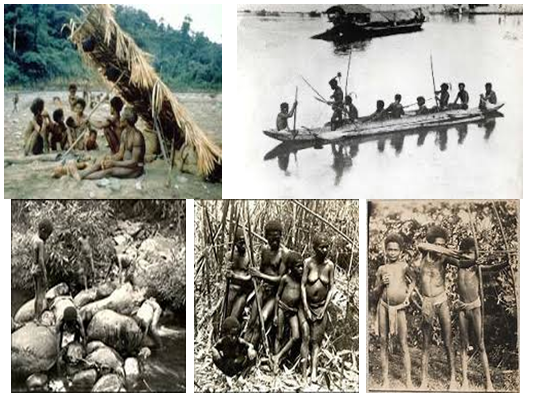


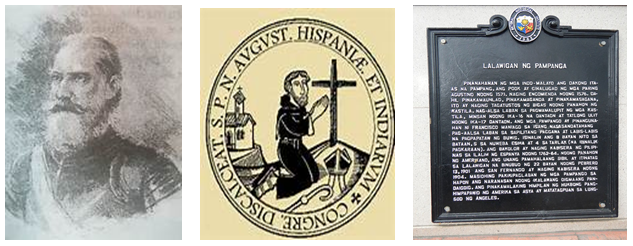





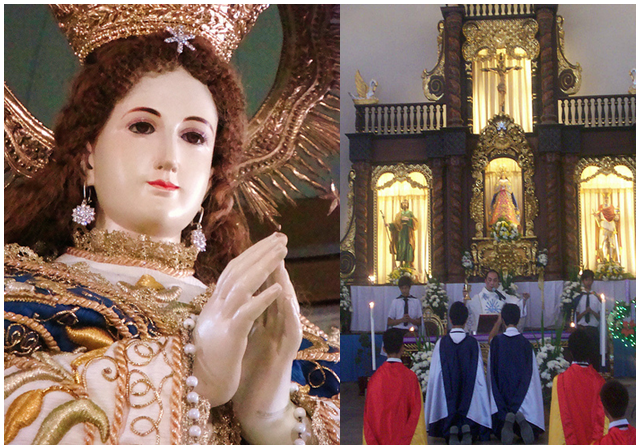

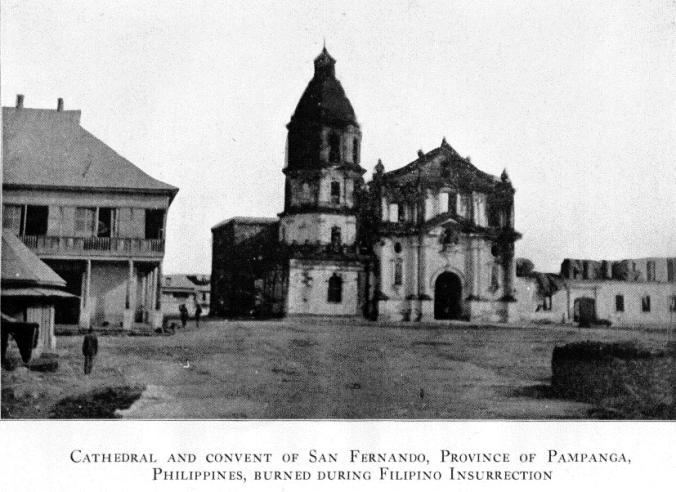
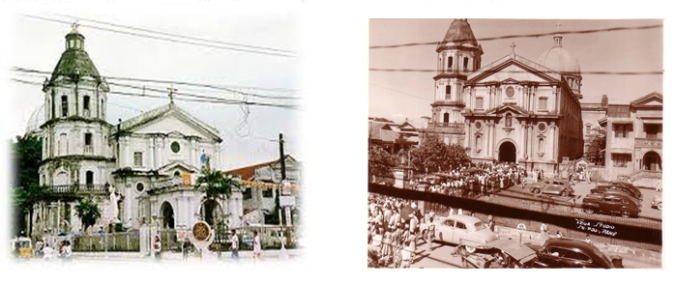
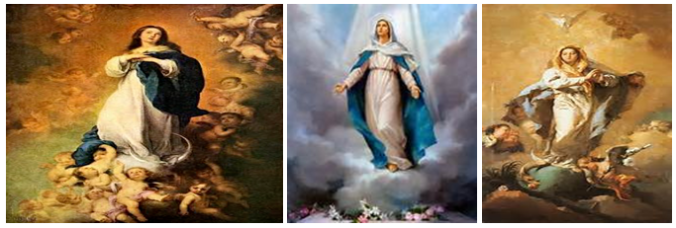

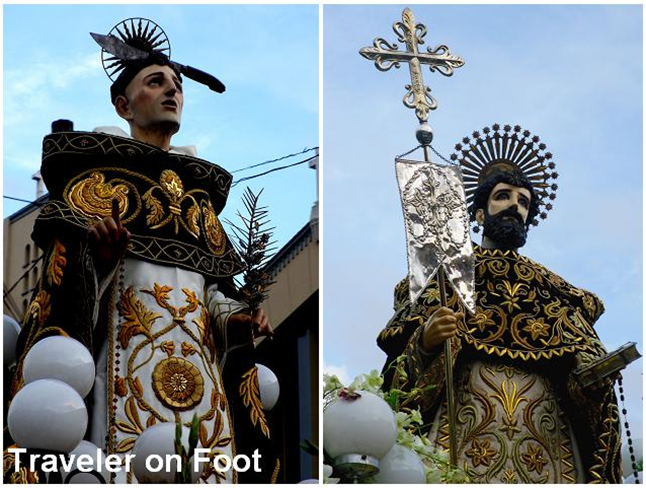


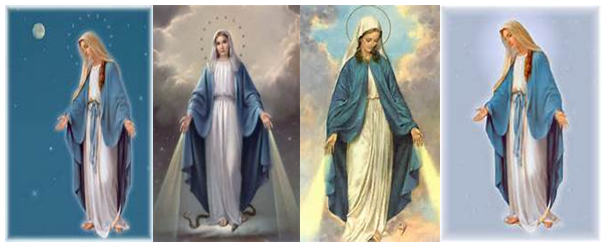
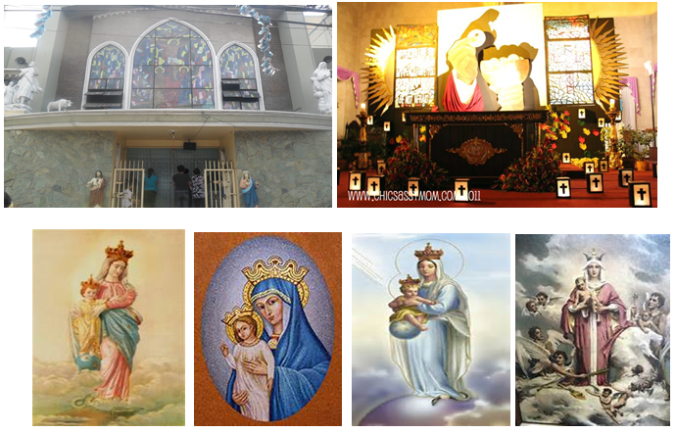


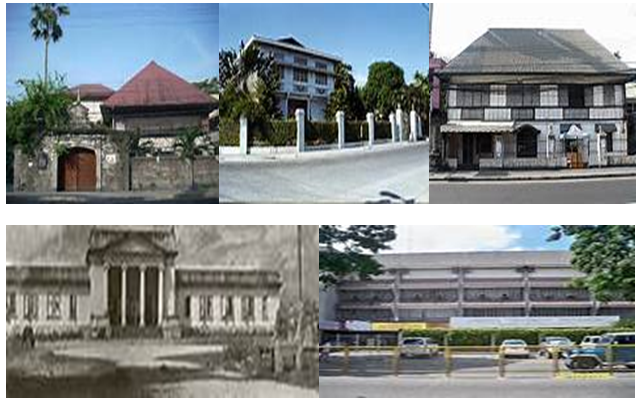
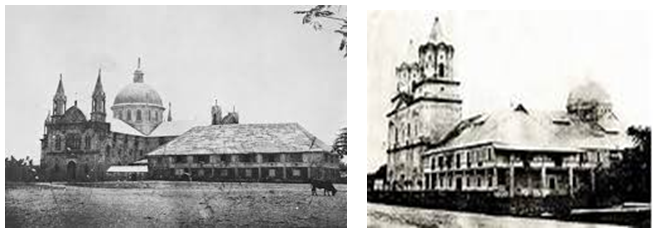
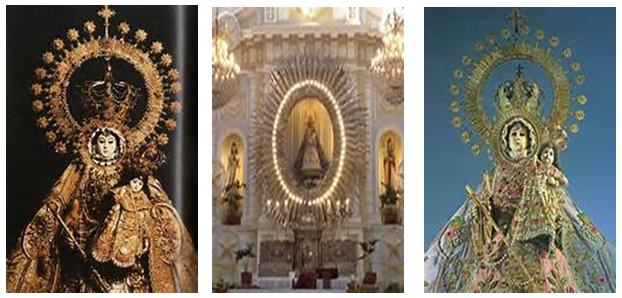

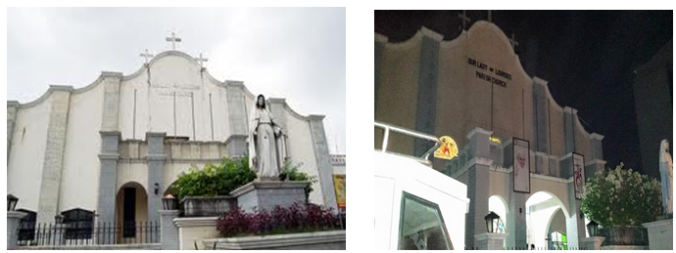

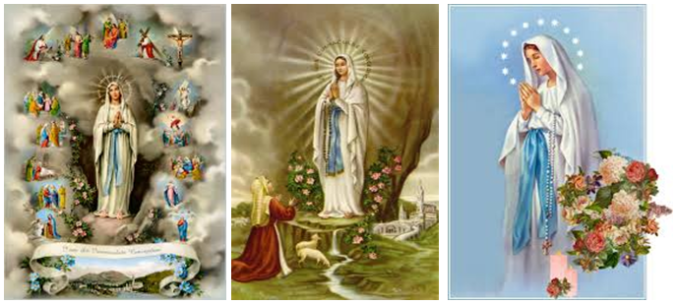
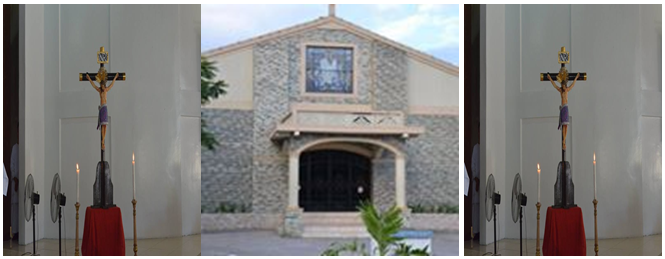





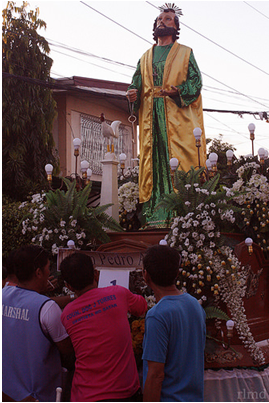


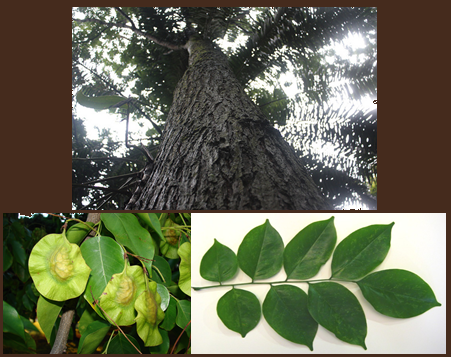
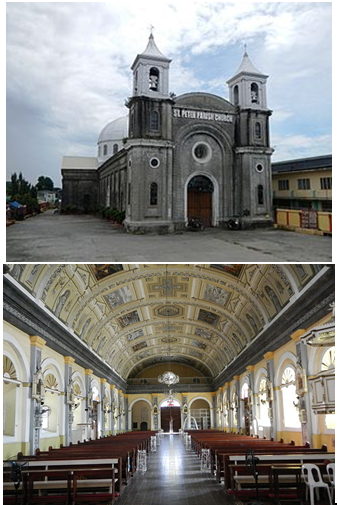






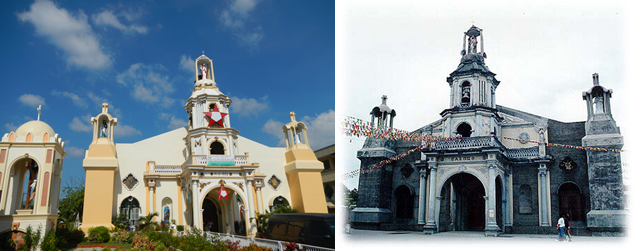













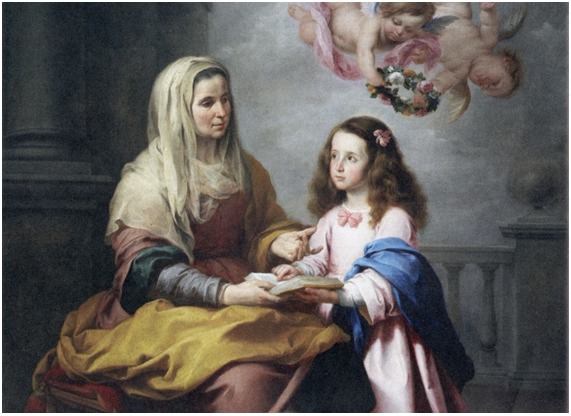





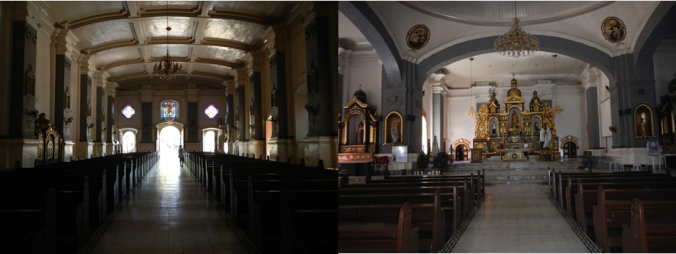
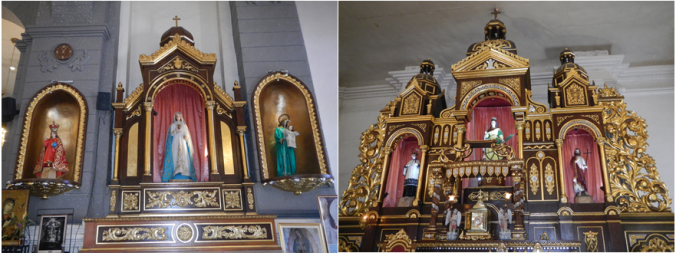



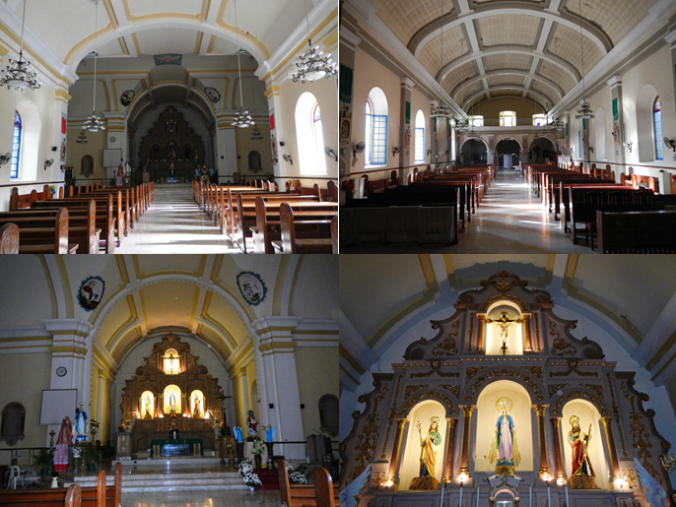
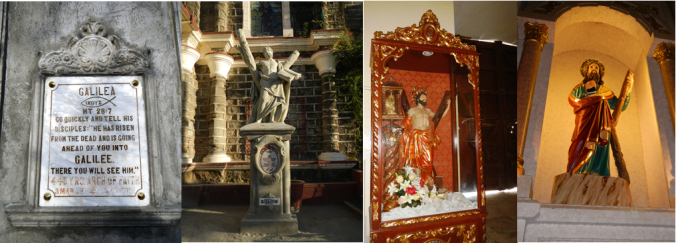




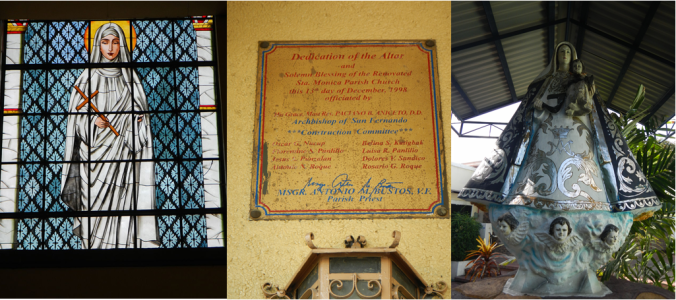








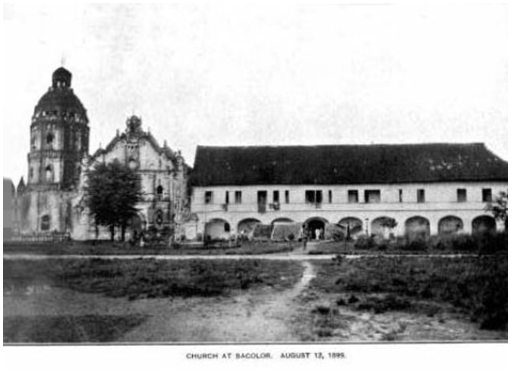
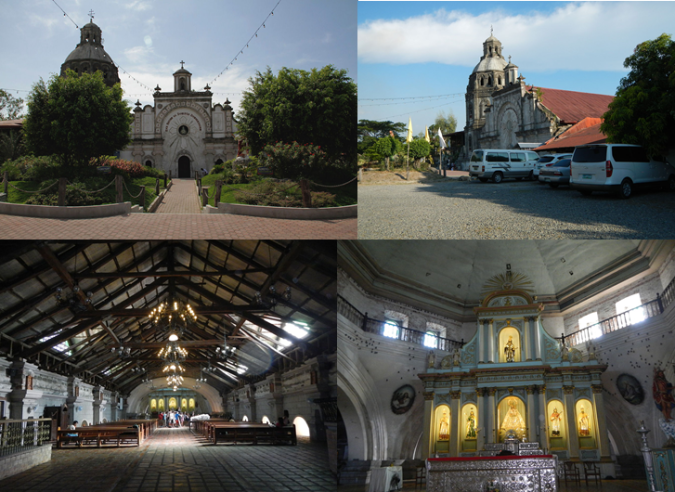








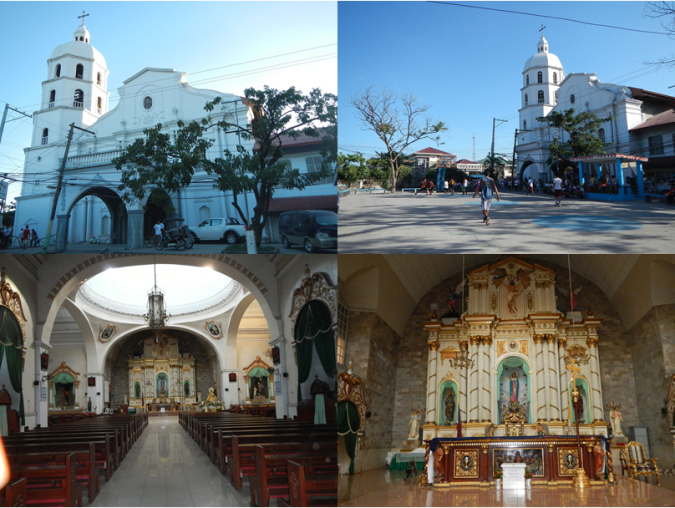
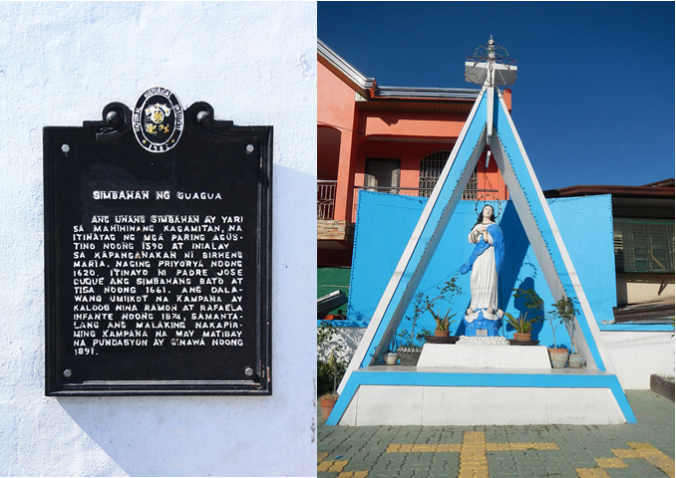
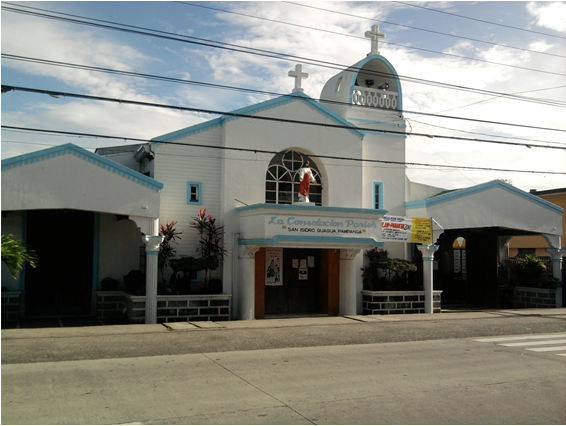




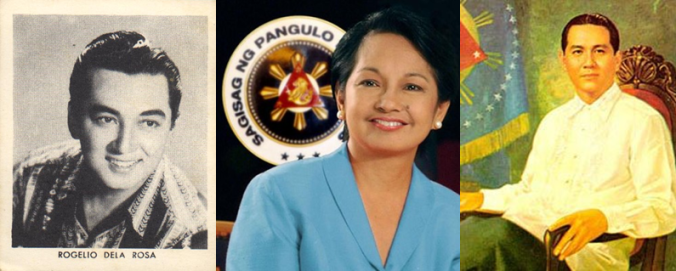

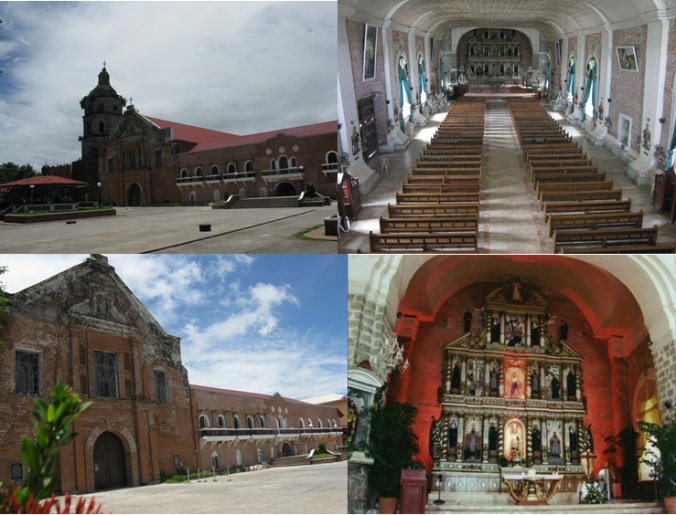

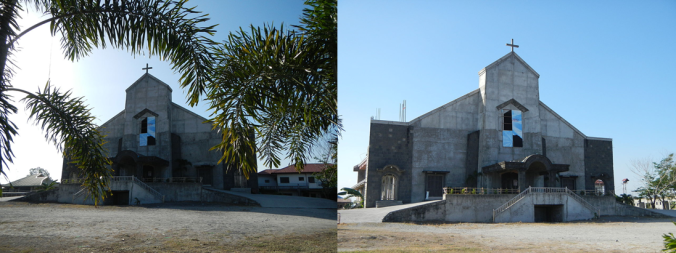

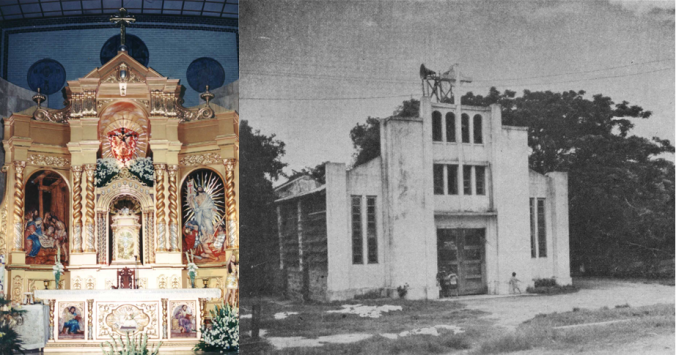



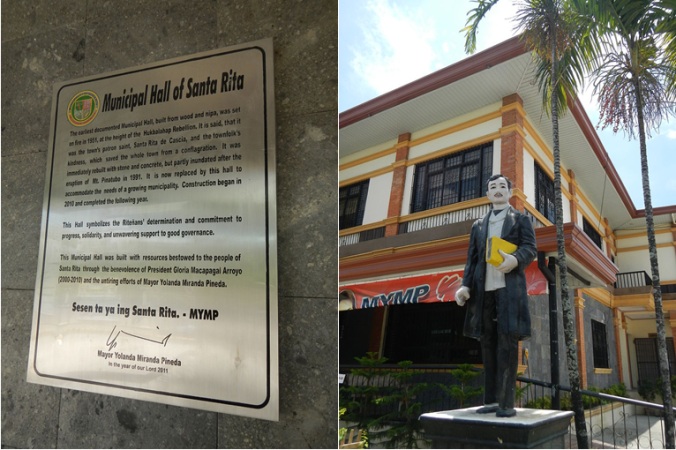



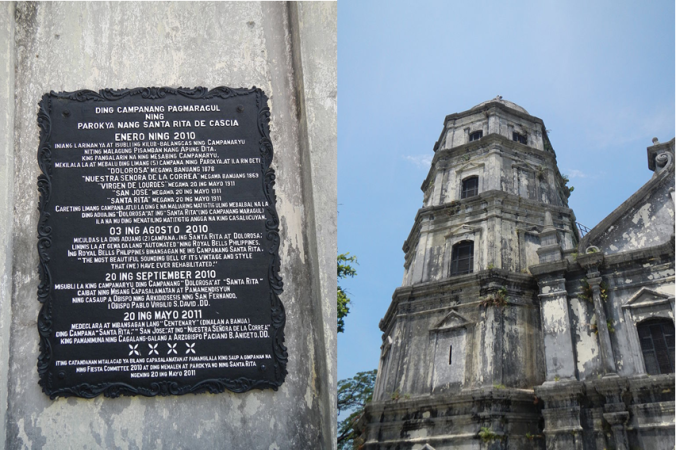




The history of San Fernando is not correct. We’ve already established that the town was created in 1754. We should stop perpetuating the errors.
Pakamalan kung Ivan,
Kanaku yang sinambitla nung nanu ya ing ginamit kung talatukyanan ketang pauna kung salita. Panupaya mu nung migkamali la detang ginawa.Salamat keng kekang puna.
“The first parish priest was Father Vidal Arrozal”
– Vidal de Arrozal was the first gobernadorcillo, not parish priest.
“It was the chief of the Spanish army, Captain Fernando who subdued this settlement against the resisting Filipino warriors. Known for his amiable character, the Spanish leader was well-loved by the residents who readily received baptism from the Agustinian missionaries. Hence, they willingly submitted and recognized the sovereignty of the ruler of Spain – King Ferdinand III.”
– This is not accurate as well. King Ferdinand III ruled from 1217–1252. There was no Capitan Fernando who subdued the settlement. San Fernando was created at the midpoint between Bacolor and Mexico because as its population grew, it became difficult for both parishes to administer the area. That fact is narrated in the foundation papers of San Fernando. Again let’s be careful about what we post online because it can perpetuate errors.
Ivan, pasibayu, dakal salamat keng ambag mung amanu.
Sir, it really takes effort to share all these information online. Bihira na la mu po ding tao na gumamit oras da para makabuo at i share king public. kinabye ya po ing daya kong Kapampangan, ing lugar na penibatan na pong tatang ing Minalin, minsan ko pa po mekapunta ka rin, at salamat a dakal mibalik ing memories. Metung kayo po kareng instrumento para luguran ya ing history at para mas aintidiyan nung nanu ing atin tamu ngeni at dapat pagyamanan. Saludo ko keka SIr Rod.
Keep on empowering local historians, God bless po.
It is with regret that I ran across your article after my trip is finalized. I immensely enjoyed reading the history of our province. Thank you.
alang nanu man abe…
Hello pu! Sana pu miragdagan pa ing history tungkul king Nuestra Señora Del Pilar Parish of San Simon kalupa na pu nitang pangabagsak na nitang dome ning pisamban. Tutung malagad pu ing masasambitla tungkul king parokya lalu na kayabe ya pa pu ata kareng considered oldest churches… Salamat pu… – Weng
Pingback: Hello, God… Are You Listening? | The HOPE Junkie